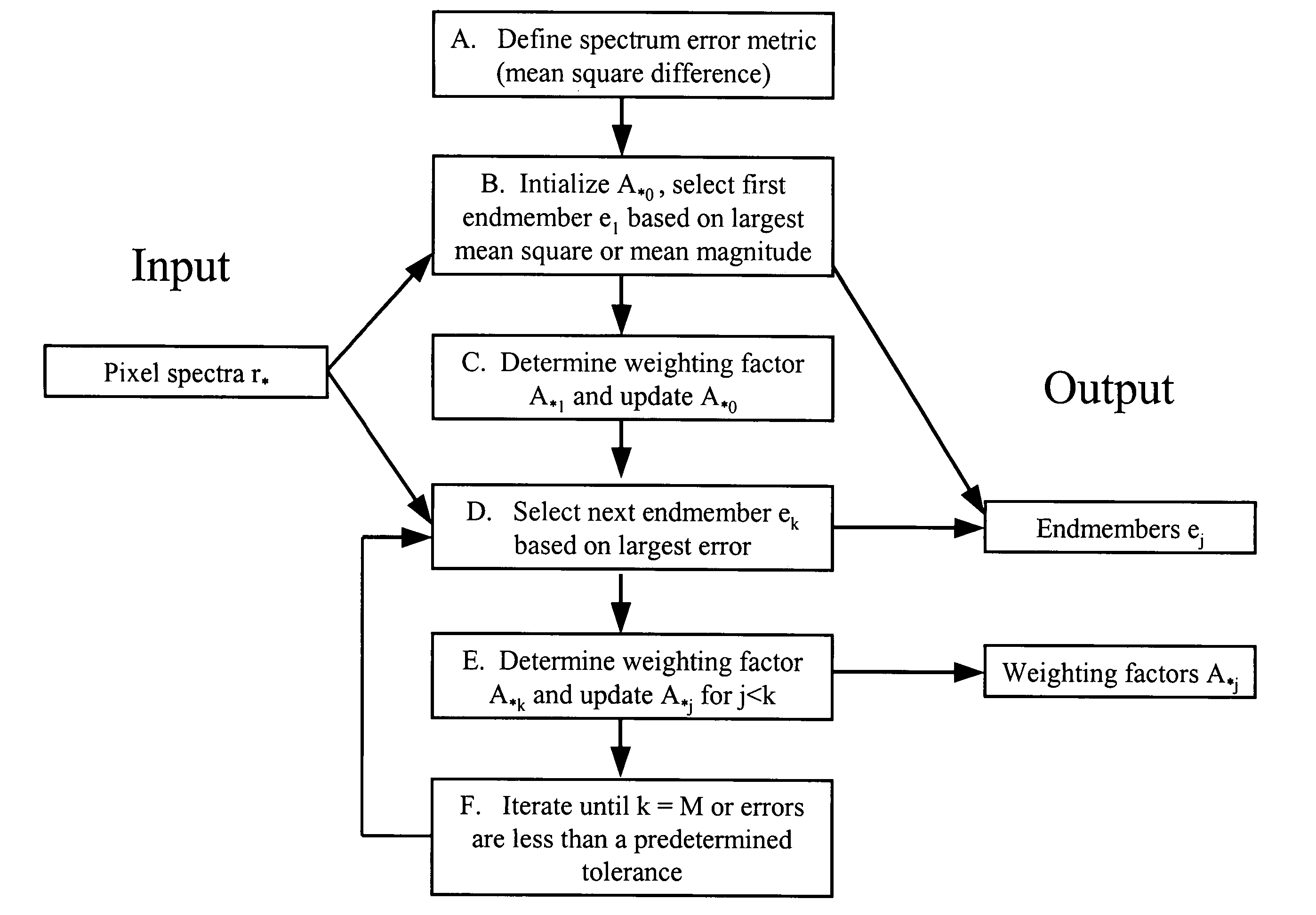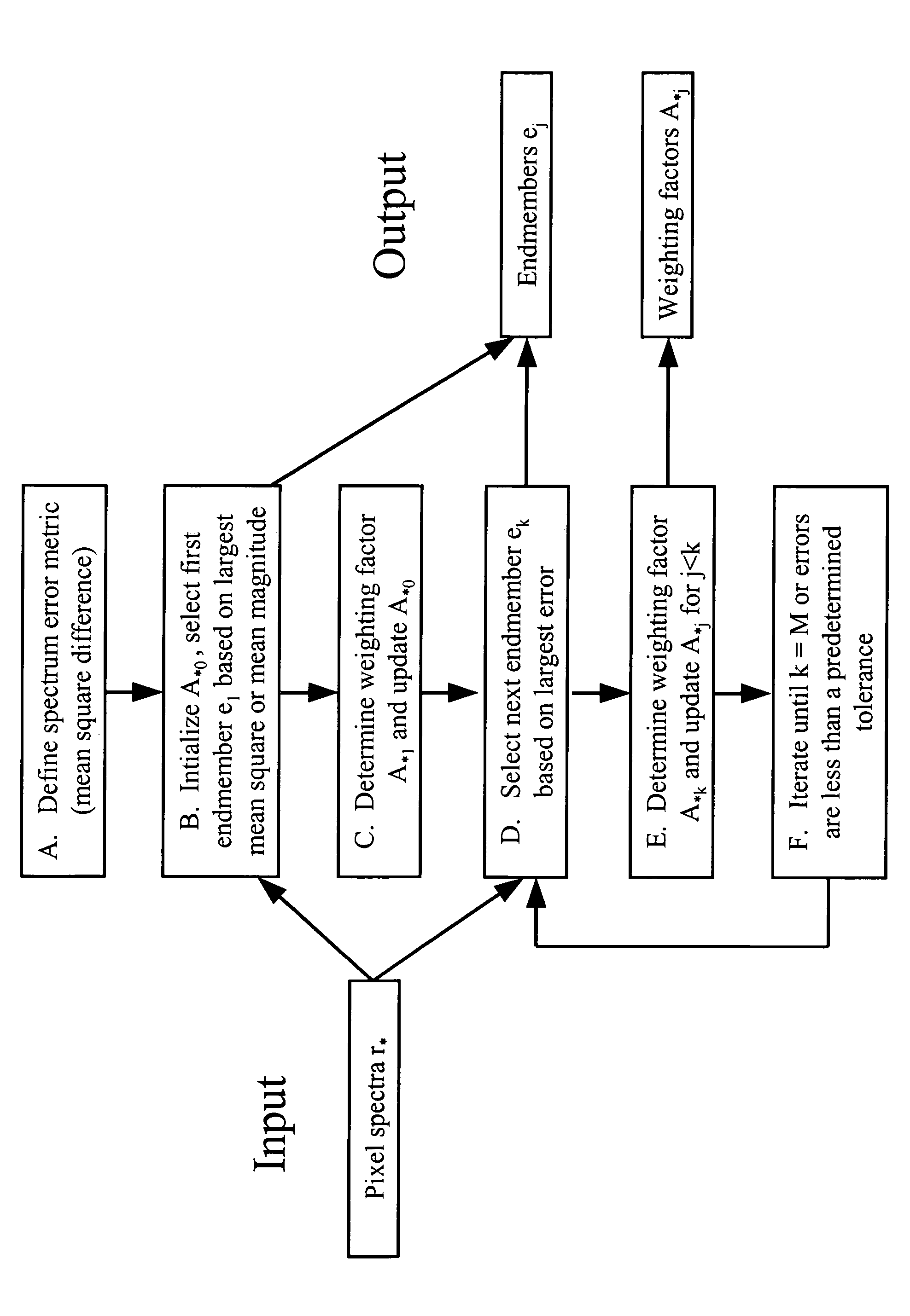Process for finding endmembers in a data set
- Summary
- Abstract
- Description
- Claims
- Application Information
AI Technical Summary
Benefits of technology
Problems solved by technology
Method used
Image
Examples
Embodiment Construction
Nomenclature and Definitions
[0018] For ease of explanation, let the set of data vectors (which must be of equal length) be a group of N spectra (in the preferred embodiment the spectra are pixel spectra), in which each pixel spectrum consists of intensity values for a set of spectral channels.
[0019] The set of pixel spectra is denoted {r1r2 . . . rN}. An arbitrary individual member of this set is denoted r*.
[0020] The endmembers to be determined are a subset of the pixel spectra and are denoted {e1 e2 . . . eM}, where M is the number of endmembers. In addition, e0 is defined as the spectrum consisting of all zero intensities, referred to as the zero endmember; it is used as a placeholder to implement an optional summation constraint as will be described.
[0021] Let R*=the pixel spectrum vector difference (also referred to as the residual) between r* and its representation via the expression ΣkA*k ek, where k runs from 1 to M. A*k is referred to as the weight (or weighting factor...
PUM
 Login to View More
Login to View More Abstract
Description
Claims
Application Information
 Login to View More
Login to View More - R&D
- Intellectual Property
- Life Sciences
- Materials
- Tech Scout
- Unparalleled Data Quality
- Higher Quality Content
- 60% Fewer Hallucinations
Browse by: Latest US Patents, China's latest patents, Technical Efficacy Thesaurus, Application Domain, Technology Topic, Popular Technical Reports.
© 2025 PatSnap. All rights reserved.Legal|Privacy policy|Modern Slavery Act Transparency Statement|Sitemap|About US| Contact US: help@patsnap.com


